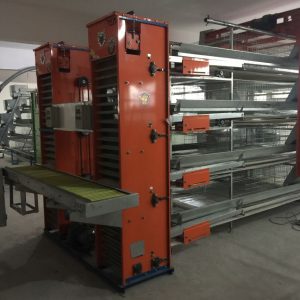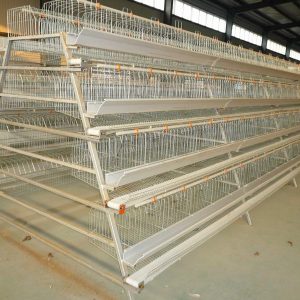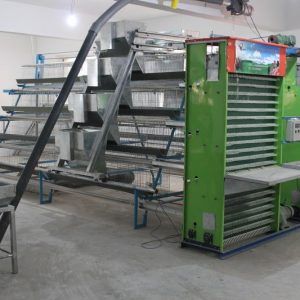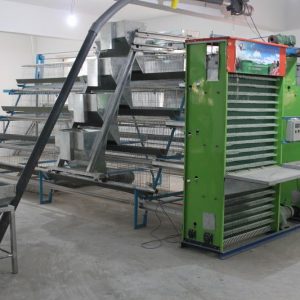
Can Hailan brown layer chicken be free-range
Can Hailan brown layer chicken be free-range? The egg price of free-range laying hens under the forest is higher than the price of captive eggs. In addition, the chicken has a low probability of getting sick and the medicine is injected, the egg production will naturally increase, and it will also save a lot of feed and improve economic efficiency. Hy-line brown layer chickens are a good free-range laying hen breed.
Is Hailan brown layer chicken free-range?
Yes.
Hailan brown layer chicken is one of the good free-range layer chicken breeds.
Hailan brown chicken is commonly used for raising chickens under the forest. Its commercial generation is newborn, the female is red, and the male is white. However, due to the fact that the female parent is a synthetic system, there are a few individuals with red fluff in the commercial generation with dark brown stripes on their backs, and some white fluff males with light brown stripes on their backs. As a commercial hen, the adult feathers are basically (overall) red and the tail is mostly white. The chicken’s head is relatively compact, with a single crown, red ear leaves, and some are partially white. Skin, beak and shin are yellow. Strong body shape, basically ingot shape.
Hailan brown chicken commercial generation performance is as follows.
97% survival rate during growth period, feed consumption during growth period 5.62 kg / head, 17-week-old body weight 1.5 kg / head, peak egg production rate during egg production period 95%, hens born in 60-week-old hens produced 246-256 Per animal, the survival rate to 60 weeks of age is 97%, the body weight at 32 weeks old is 1.91 kg, the body weight at 70 weeks old is 1.98 kg, and the average daily consumption (18-80 weeks old) is 107 g / b · day.
Can Hailan brown shell young layer hens be housed in family? What is the egg production rate?
Captive laying hens are not as good as cages. In captivity, the feeding of laying hens is not standardized, unhygienic, and the amount of laying hens is large. The number of breeding in the same area is reduced. The hygiene of the entire pen is difficult to control, and the laying hens are not easy to manage The shell of the laid eggs is dirty, it is difficult to pick up the eggs, and the laying hens are easy to get sick. The egg production rate is relatively lower than that of cages. Therefore, it is recommended that you cage-raising, cage-laying egg production rate is high.
How to raise Hailan layer chicken under the forest?
Hyland brown chickens are often used in undergrowth. Feeding methods:
1. Guarantee nutrition supply
After laying, the laying hens should provide sufficient feed to ensure that the laying hens can eat freely. Generally, free-range laying hens eat 100 ~ 120 grams of feed per day, especially after the beginning of production. There is no limit, otherwise the laying hens will not eat enough, affecting the development of follicles and production. The weight loss after eggs leads to a low egg production rate in the later period.
2. Try to feed the full-priced layer feed
Although corn and wheat bran are good feed ingredients, they lack protein, calcium, and phosphorus. Even if free-range laying hens can obtain some minerals from the soil, because of the low mineral content in many areas, the demand cannot be met. If the laying hens are fed a compound feed consisting of corn, wheat bran, soybean cake, bone meal, salt, shells, and amino acids, trace elements and vitamins, it can ensure that the laying hens have sufficient nutrition, which can meet their weight development and production. Egg demand can avoid the occurrence of nutritional deficiencies, such as feather pecking and paralyzed legs. In addition, some free-range laying hens mistakenly think that the feed is expensive and the corn is cheap. In fact, the price of corn is equivalent to the price of compound feed for laying hens. Feeding corn does not reduce the cost.
3. Make good ventilation and heat preservation measures
The microclimate of the chicken house has a great influence on the health and productivity of laying hens, especially in winter, we should strengthen and create good microclimate conditions to ensure the health of chickens, prevent diseases, and maximize their production performance.
4. Guarantee light time
Give the laying hens 16 hours of light every day. According to traditional farming experience, laying hens will lay less eggs after autumn, and they will not lay eggs in winter because the light time is shorter after the summer solstice. To ensure long-term constant egg laying, constant light should be ensured. It is recommended to turn on the lights at 4:30 every morning, turn off the lights after dawn during the day, turn off the lights before dark, and turn off the lights at 8:30 in the evening; generally 1 to 2 watts per square meter, but pay attention to using low-power energy-saving lamps as far as possible, the bulb is in the chicken The houses should be evenly distributed, so that people can see the characters on the ground of the chicken houses at normal distances.
Hailan brown egg chicken pulling green shit
Yellow-green watery stool, polluted perianal feathers: avian typhoid. Yellow-green sticky soft stool: atypical Newcastle disease. Green yellow sticky soft stool: Escherichia coli disease. Bloody yellow-green sticky soft stools: Newcastle disease. Bloody green and yellow sticky soft stools: avian influenza. Egg white-like mucus loose stools with green hard stool: avian influenza. Blood in normal feces and urine: intestinal coccidiosis. Red dysentery: Intestinal influenza. Green dysentery: avian influenza, colibacillosis. Yellow dysentery: typical Newcastle disease, virulent Newcastle disease. Black dysentery: i Acute hemorrhagic enteritis, commonly seen in avian influenza, typical Newcastle disease; ii gastric ulcer, va deficiency, mostly caused by poor quality fish meal in feed Blood in black feces: necrotizing enteritis. White dysentery: common in chicken white dysentery, infectious bursal disease, infectious bronchitis, nephritis, gout. Bloody stool: Perianal feathers are contaminated: cecal coccidiosis. Bloody stool: Perianal feathers are not contaminated: enterotoxin syndrome. White color bloody stools: refractory enteritis, infectious bursal disease, chronic coccidiosis, ascariasis (also known as water-washed vagina). The mucus watery stool turns from white to green: poultry cholera. Foamy loose stools: table salt poisoning (with history of excessive salt use), dysentery poisoning (history of useful drugs), enteritis. Sugar chicken diarrhea: cecum feces, which is normal fecal urine. Green molded feces: cold bowel disease, a mild type of intestinal influenza, chickens are raised online or in cages, and their abdomen is affected by cold waves. Forming fecal urine, urate is sulfur-colored: early cecal hepatitis disease, also called trichomoniasis, blackhead disease. Green feces with bubbles, feces with blood in severe cases: cecum hepatitis in the outbreak stage. Normal feces and urine with bright red blood: anal rupture. Yellow radish color, orange-red sticky soft stool: enterotoxin syndrome. Yellow-white color is thick and soft stool: late yolk peritonitis. Poor control: early enteritis, enterotoxin syndrome. Laying hens’ watery stool: physiological enteritis, atypical bursal disease, stress syndrome of primary labor. Normal fecal urine, urate is too heavy: the protein in the feed is too high, the kidneys are inflamed, and gout can form in severe cases.



